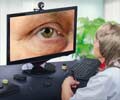Diabetic retinopathy is the most common disorder seen in diabetics. New research shows several factors that may contribute to whether a person with diabetes develops diabetic retinopathy, a major cause of blindness for people with diabetes. In the United States, diabetes is responsible for 7 percent of legal blindness, making it the leading cause of new cases of blindness in adults 22 to 70 years old.
Researchers from the Texas studied more than 600 individuals who were part of the Hoorn Study, a population-based study consisting of more than 1,260 people between ages 52 and 70 years. The prevalence of retinopathy was measured among participants, who either had normal glucose metabolism, impaired glucose metabolism, newly diagnosed diabetes, or known diabetes. In each of the participants, researchers also measured factors such as blood pressure levels, body mass index, cholesterol and triglyceride levels.Results show the prevalence of retinopathy was 9 percent in participants with normal glucose metabolism, 11 percent in those with impaired glucose metabolism, 13 percent in patients with newly diagnosed diabetes, and 34 percent in those with known diabetes. Although high blood sugar levels and duration of diabetes are linked with the risk of retinopathy among patients with diabetes, other factors may also play a key role. This study shows elevated blood pressure levels, body mass index, cholesterol and triglyceride levels are all associated with a higher risk of retinopathy.











